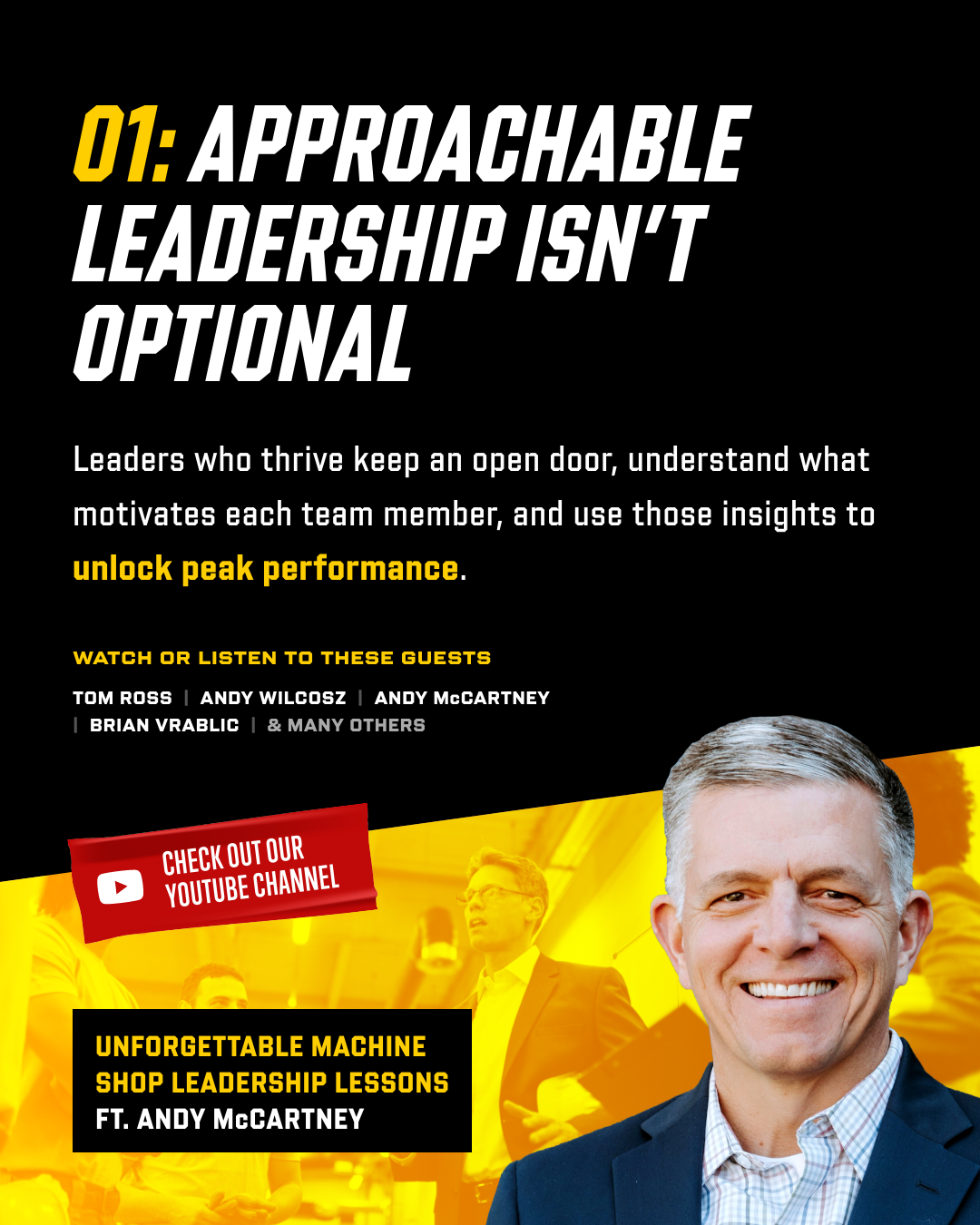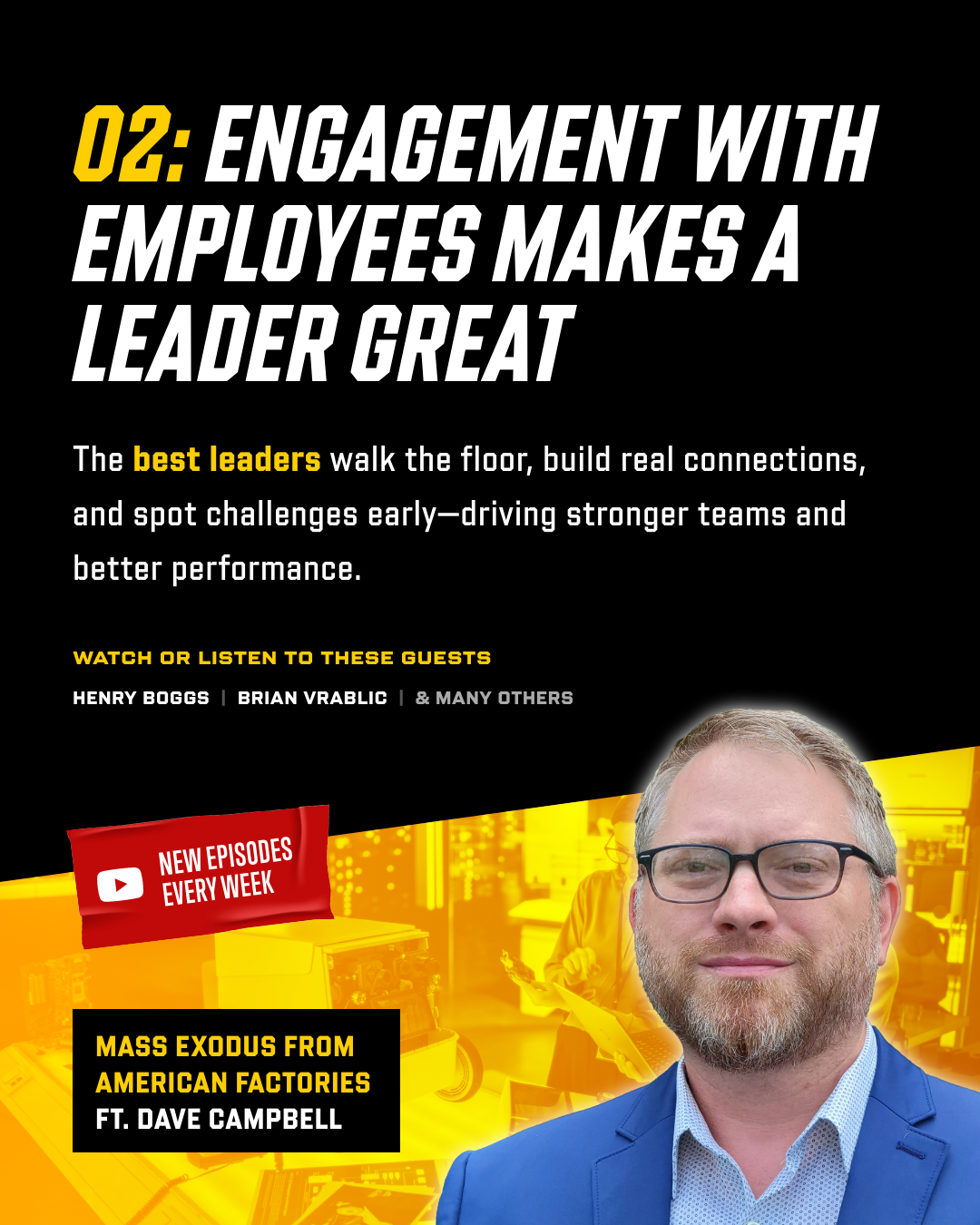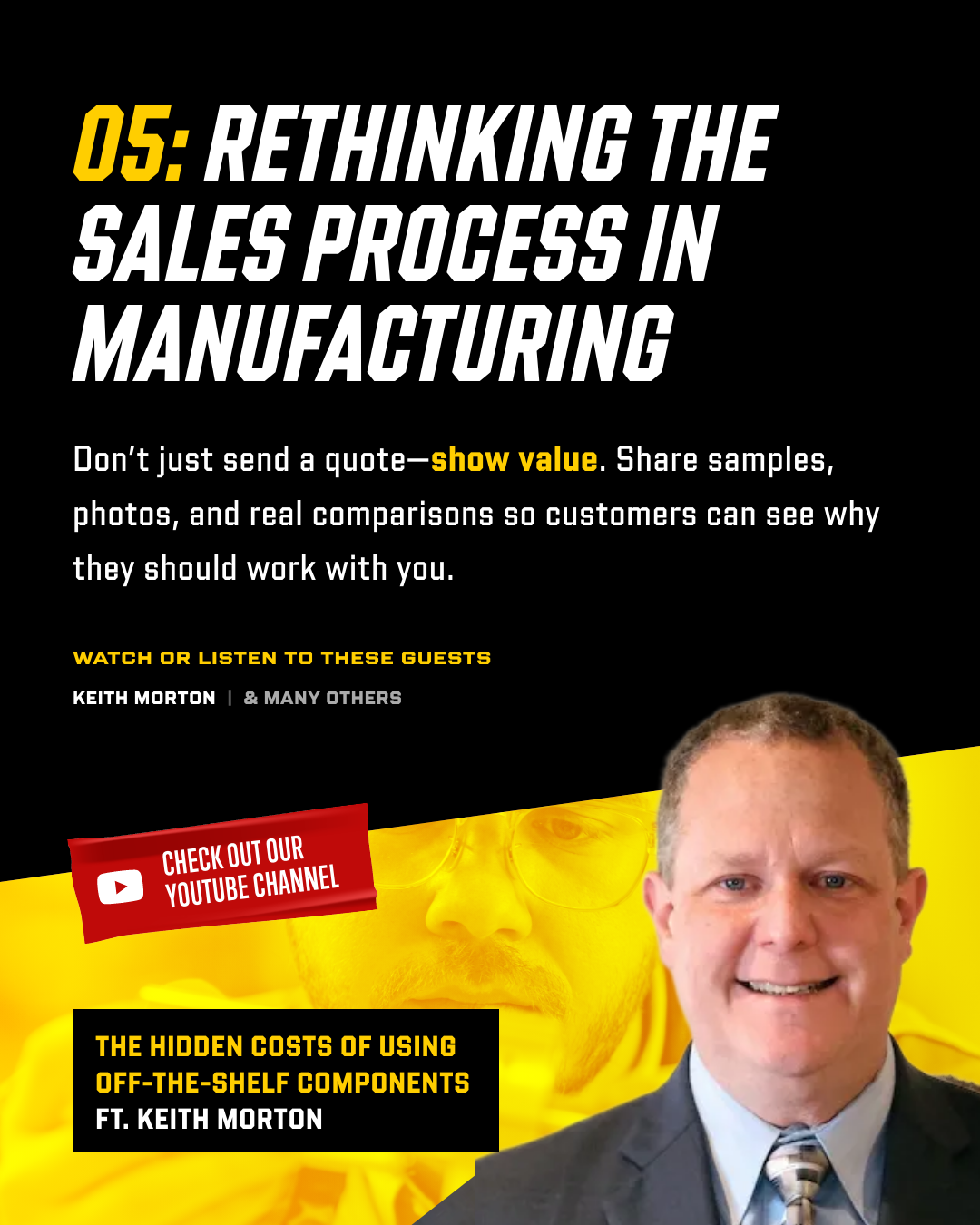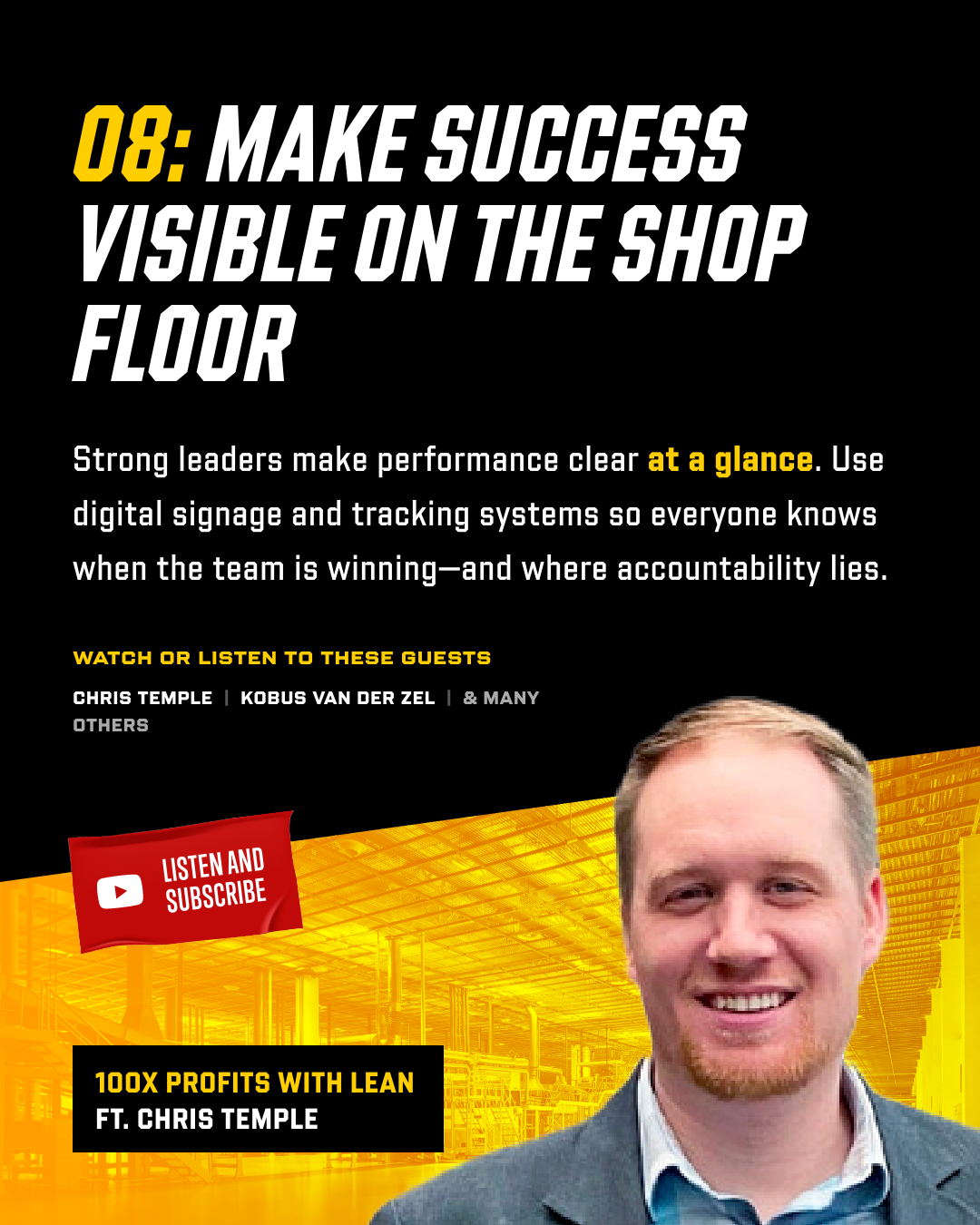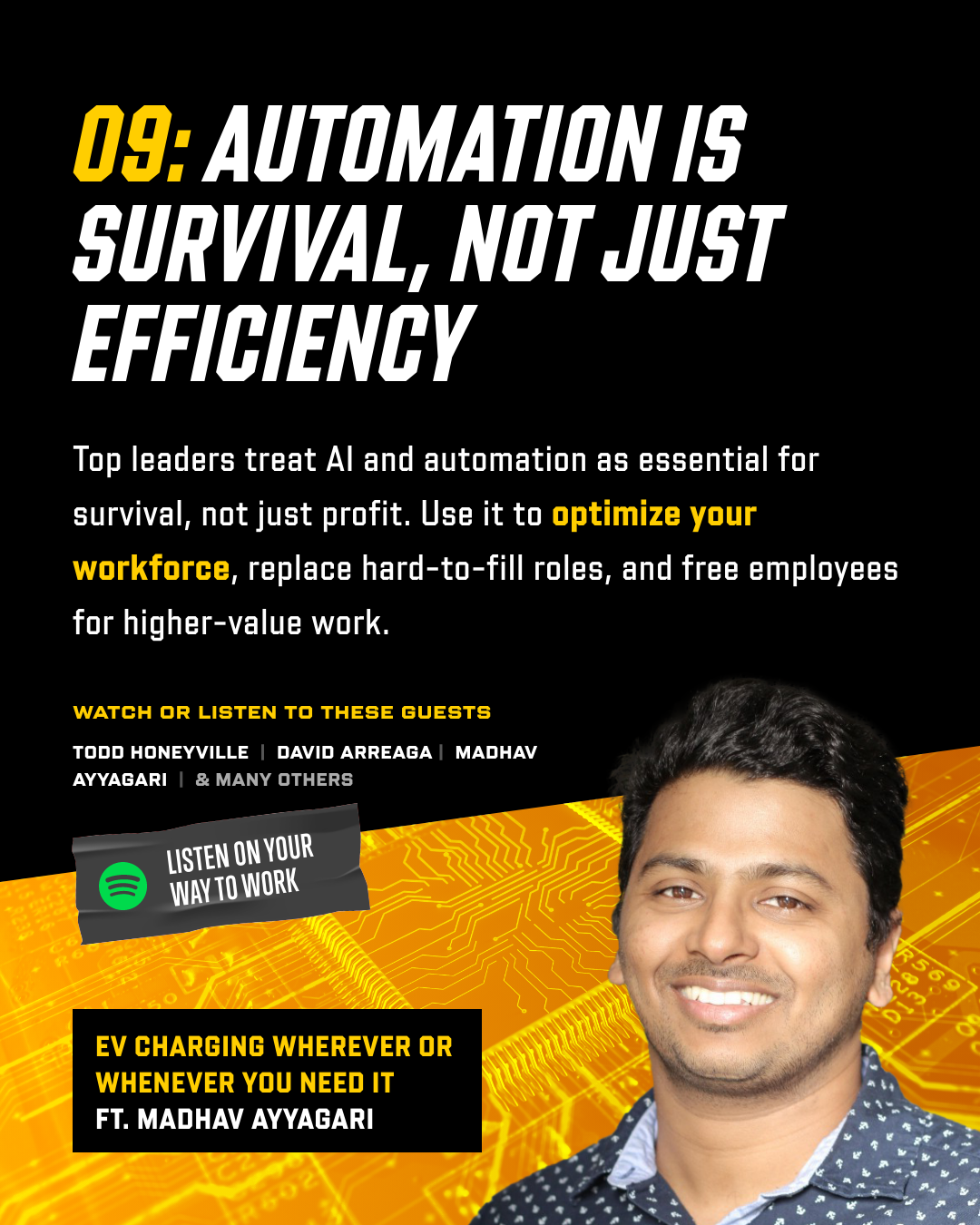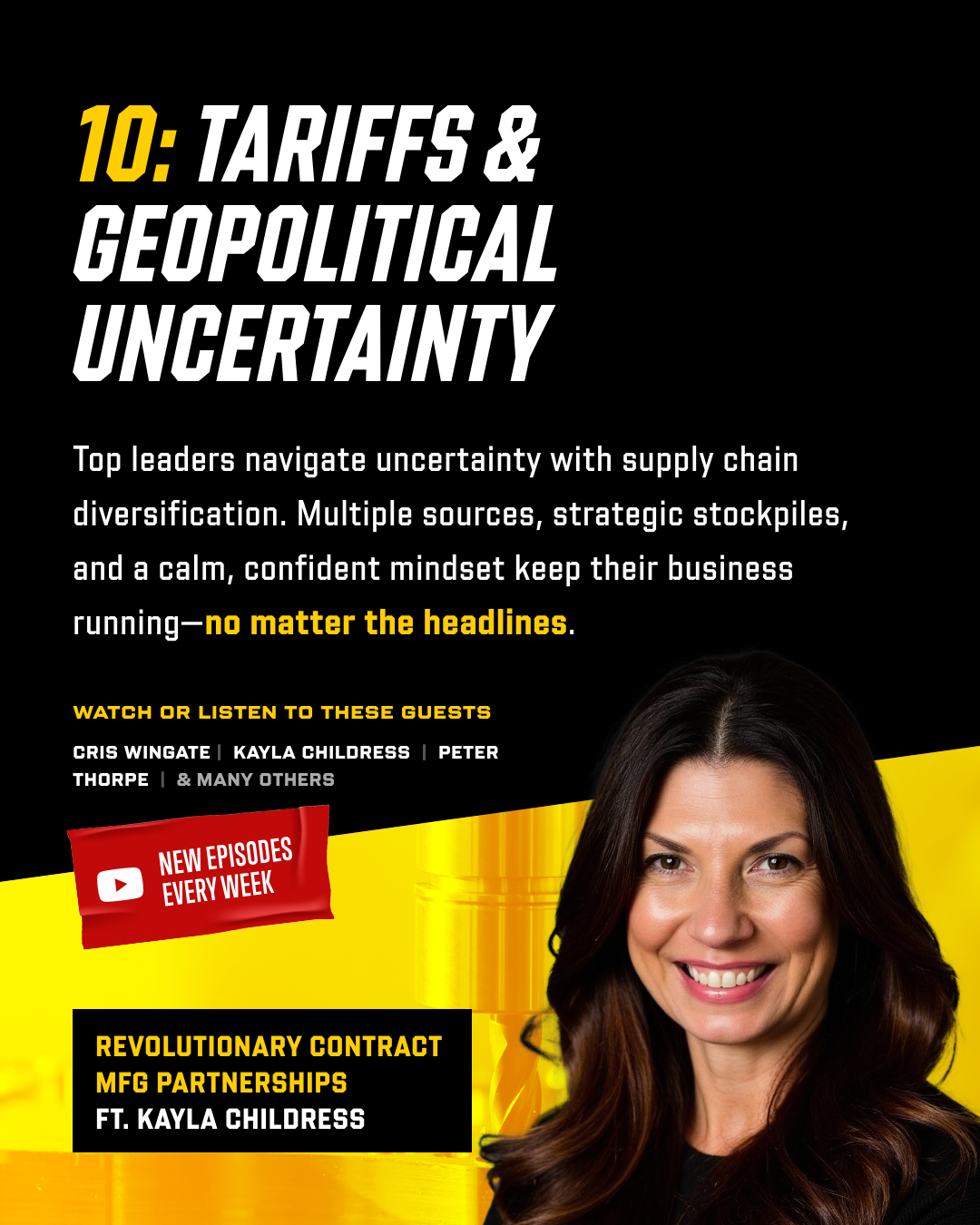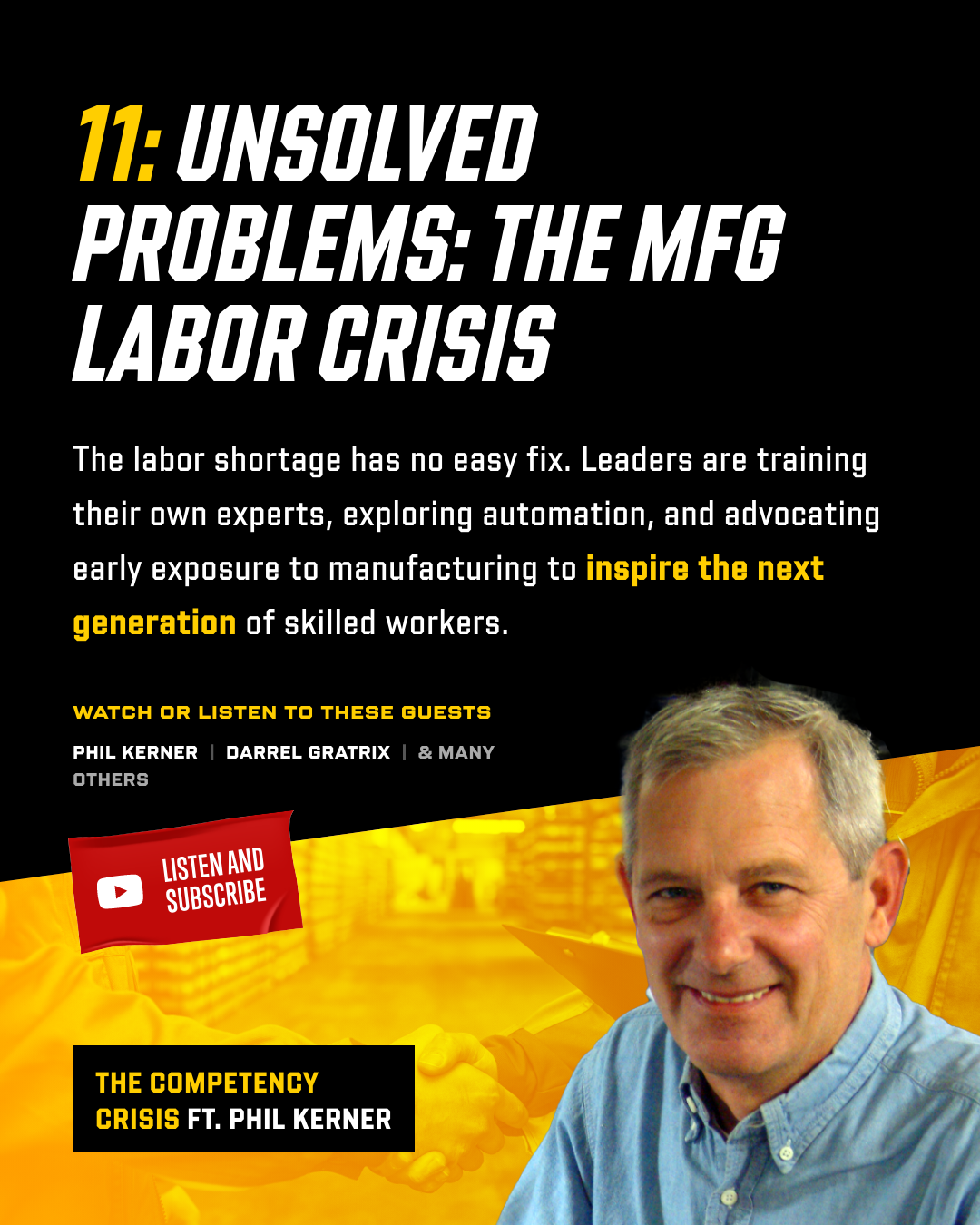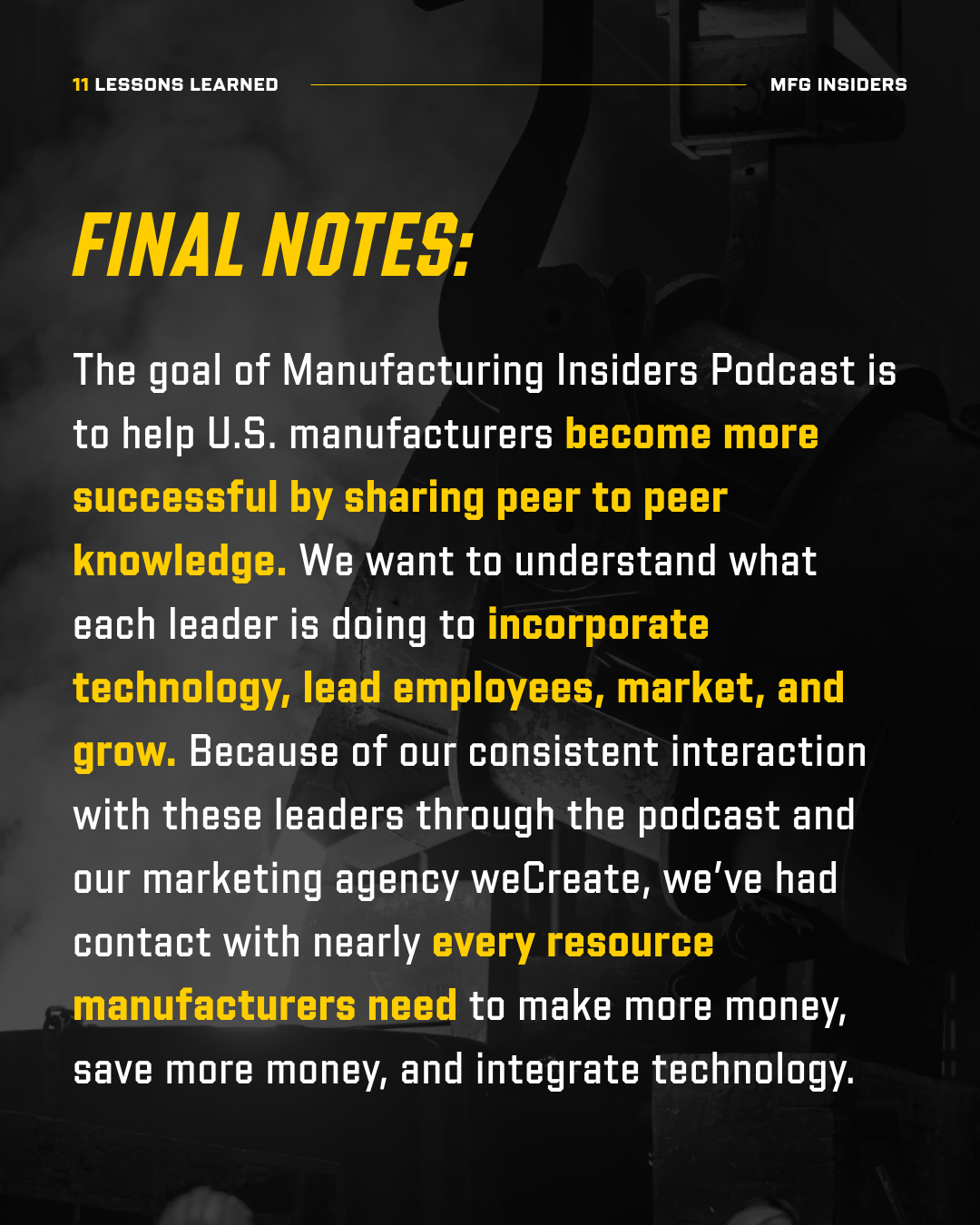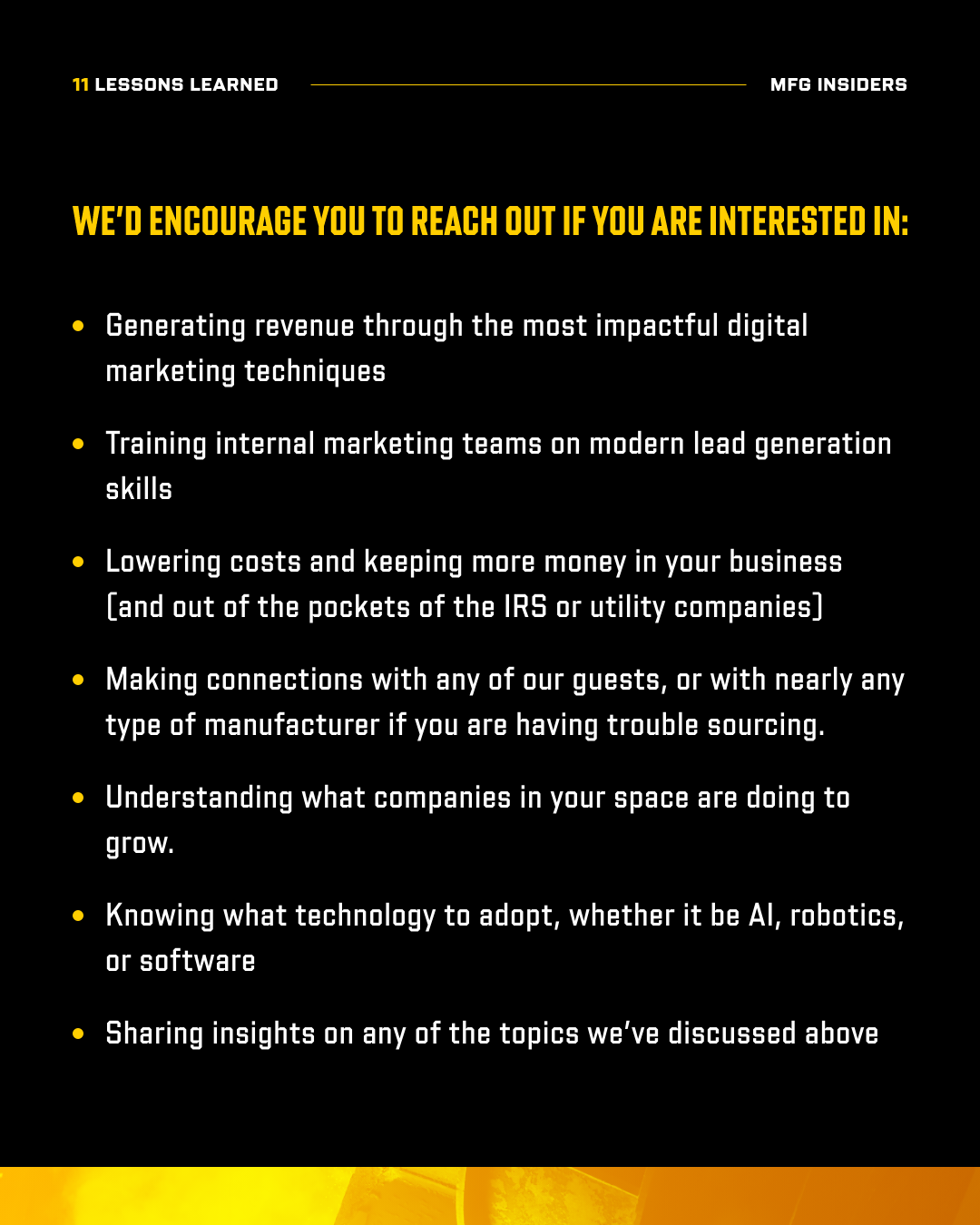
Peering inside the minds of successful manufacturing leaders has brought some clarity to running a thriving business in these dynamic and often turbulent times. I thought it would be helpful to share some of the most interesting and useful pointers from our first 50 conversations in the Manufacturing Insiders Podcast. The leaders we’ve interviewed are successful and run thriving businesses. Who wouldn’t want to learn how they did it? The podcast has opened up a whole new world of connections and insights, and we want you to be part of it! Whether you just subscribe and tune in, or you’d like to be a guest, check out some of the top tips we’ve compiled here and then send us a message.
- Approachable leadership. They all have an open-door policy and recognize that each employee has different needs and drivers. They all have a mechanism for determining these drivers and for leveraging them to optimize performance. (Tom Ross, Andy Wilcosz, Andy McCartney, Brian Vrablic + many others)
- Engagement. They all walk the floor throughout the day and engage with employees. This helps them to evaluate performance, create connections, and identify production issues. (See Henry Boggs, Brian Vrablic)
- Culture. All leaders mention culture as vital to their success. They have mechanisms to evaluate “culture fit” when hiring new employees. Some use personality tests, but most rely on gut feeling. One guest asks prospective employees questions about hobbies as a way to identify culture fit. The idea is that if an employee shows passion for hobbies, that’s an indicator of their ability to be excited about their work performance. The point is that you should be hiring for “culture fit” first, instead of focusing solely on qualifications. Hire slow, and fire fast! (See Rodney Chiodo, Tom Ross, Aaron Dobbins, Josh Liegel)
- Data collection. Most of us realize that AI and Automation is the way of the future. Many of us are not sure what the next step is to get ahead of it and leverage it. The answer is DATA. Start collecting data. Try to identify what matters most in your company – parts per hour, uptime, quality, etc. – and find a way to measure it. If there’s a sensor or automatic way to continuously measure it, then that’s ideal. That data is going to be the key determinant in how effective your digital transformation is. (See Travis Cox [posted soon], Todd Honeyville)
- Product demos. Too many manufacturers get an inquiry and send out a quote. Realize that your customer wants to see, feel, and understand why they should work with you. Give them what they need. Send them a sample of something similar you’ve manufactured, send them some pictures and draw analogies to the features on their request for quote. (See Keith Morton [posted soon])
- Diversification. There is more to diversification than identifying a few more verticals to sell your product or services. These are the other areas you should be diversified in:
- Supply chain: Make sure critical components are sourced from separate markets. Even if you only order 5% from an alternative source, and even if they don’t have an immediate competitive advantage, still do it.
- Workforce: Hire young people that fit your culture even if you don’t need them right now. Your experienced workforce is aging, and they need someone to pass their knowledge to. Also, begin to find ways to record the accumulated knowledge of your organization to ease transition. Create bulletproof processes instead of relying on the magic an experienced employee can produce.
- Marketing: What’s worked in the past will likely not work in the future. Partner with a forward-looking digital agency that understands the way the marketplace is changing. (See Jon Meighan, Todd King)
- Communication. Recently, a manufacturing executive told me about an internal program he developed because leadership characteristics are difficult to find in the individuals he’d like to promote – specifically their communication skills. He said that one of the issues he teaches about in that program relates to tone regulation. He says to take the emotion out of your voice when you’re communicating on sensitive topics to employees. Too many leaders convey anger or stress in their voice when they just need to clearly and calmly communicate what they need done. I think we all can benefit from keeping this idea top of mind at home and at work! (See Andy Wilcosz, Art Oliva [posted soon])
- Visible indicators. One leader said that someone who knows nothing about your process should be able to glance at a production area and know whether things are going well or if they’re not. Digital signage that displays whether you are winning or losing based on the criteria you believe is important can be a great first step. In addition, successful leaders add signage anywhere that tracks success. You may find signs in bathrooms that indicate when it was cleaned and whose job it is to refill supplies. These leaders make it impossible for anyone to point a finger at someone else. (See Chris Temple, Kobus Van Der Zel)
- Automation. Successful leaders drive the idea home to their team regularly that they need to stay focused on AI and automation – not just as a way to generate more profit, but as a method of survival. The labor shortage is not going to get better, so they think of automation as a way to use their workforce most efficiently. In some cases they can replace difficult to fill positions with robotics. In other cases, they can move employees away from tedious inspection jobs into roles that are more valuable for the company and more rewarding for the employee. Robotic automation isn’t for everyone – at least not yet. The companies that benefit the most from automation are involved in high volume production of relatively consistent parts or assemblies, whereas companies that have high mix/ low volume business models will often struggle to justify the cost and effort. AI and automation in business analytics, forecasting, accounting, training, and so many more areas is applicable to nearly all businesses. (See Todd Honeyville, David Arreaga, Madhav Ayyagari)
- Tariffs and Geopolitical Uncertainty. The leaders I’ve interviewed have successfully navigated these issues through supply chain diversification. Successful companies should source critical components from multiple sources/countries/vendors and potentially stockpile these components, especially if a sudden shortage would shut down your business. These successful leaders have a confident mindset and do not get too wrapped up in the headlines of geopolitics. In general, they do not seem too worried about the long-term success of their company due to the short-term turbulence. (See Cris Wingate, Peter Thorpe, Kayla Childress)
- Unsolved Problems. No leader I spoke to was able to adequately describe a solution to the labor shortage. In some instances, the technology does not exist to fill these roles with robots. Some created internal training programs to “make their own” experts instead of relying on tech schools to do the job. In general, it appears as if we have a generation moving into the workforce that is first smaller than the previous, and second, less willing to put up with low-paying, tedious jobs. There is also a lack of adequate training programs to prepare young people for technical manufacturing jobs. Some ideas to help this workforce issue are:
- A national concerted and funded effort to teach kids from an early age, the exciting world of manufacturing and innovation. We are waiting too long to introduce these kids to manufacturing.
- Using the prison system with work release programs
- Industrial automation
- Legal immigration
In my opinion, manufacturing is exciting. Seeing how products are made, and how manufacturers are solving challenges, is a ton of fun. I think many kids would share this feeling if they were exposed to it. As a parent, I see the programming my child wants to watch (Paw Patrol, Blippi, etc.) and think that it wouldn’t be too difficult to create a fascinating show for kids that visits manufacturing facilities, shows how things are made, and glorifies the amazingly skilled people that are making them. (See Phil Kerner, Darrel Gratrix, Josh Borrow & David Campbell)
Final notes: The goal of Manufacturing Insiders Podcast is to help U.S. manufacturers become more successful by sharing peer to peer knowledge. We want to understand what each leader is doing to incorporate technology, lead employees, market, and grow. Because of our consistent interaction with these leaders through the podcast and our marketing agency weCreate, we’ve had contact with nearly every resource manufacturers need to make more money, save more money, and integrate technology. We’d encourage you to reach out if you are interested in:
- Generating revenue through the most impactful digital marketing techniques
- Training internal marketing teams on modern lead generation skills
- Lowering costs and keeping more money in your business (and out of the pockets of the IRS or utility companies)
- Making connections with any of our guests, or with nearly any type of manufacturer if you are having trouble sourcing.
- Understanding what companies in your space are doing to grow.
- Knowing what technology to adopt, whether it be AI, robotics, or software
- Sharing insights on any of the topics we’ve discussed above
I look forward to our conversation!




